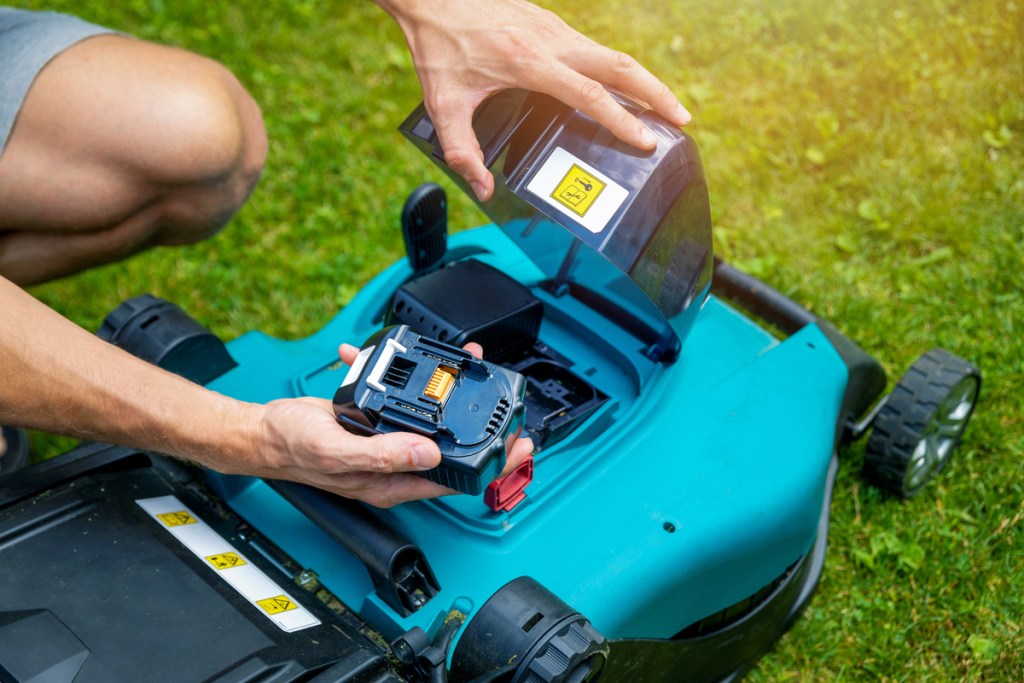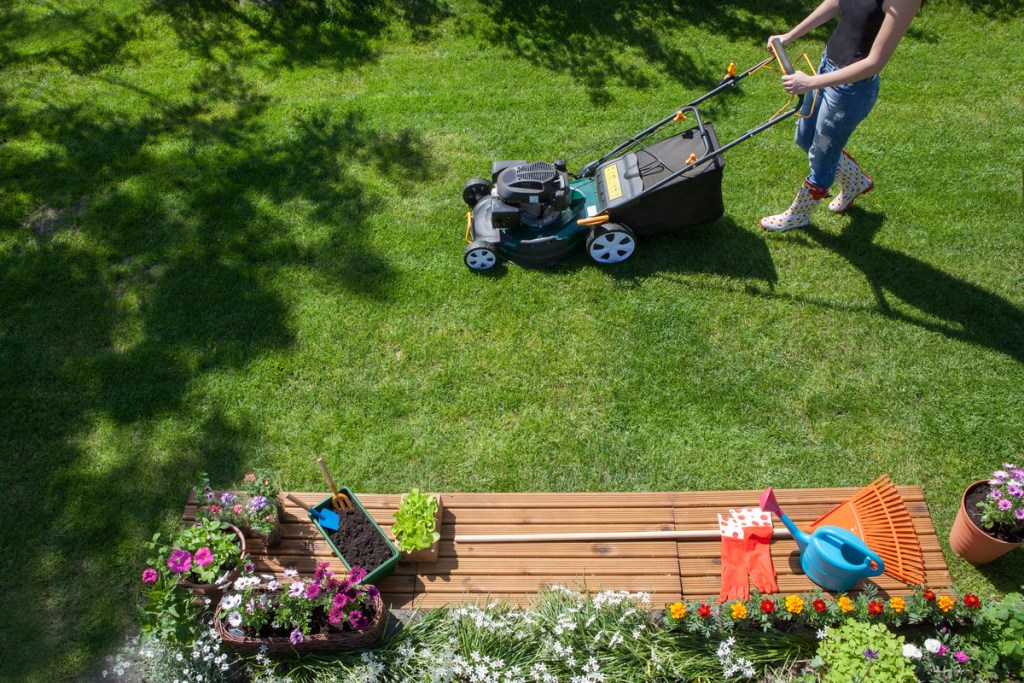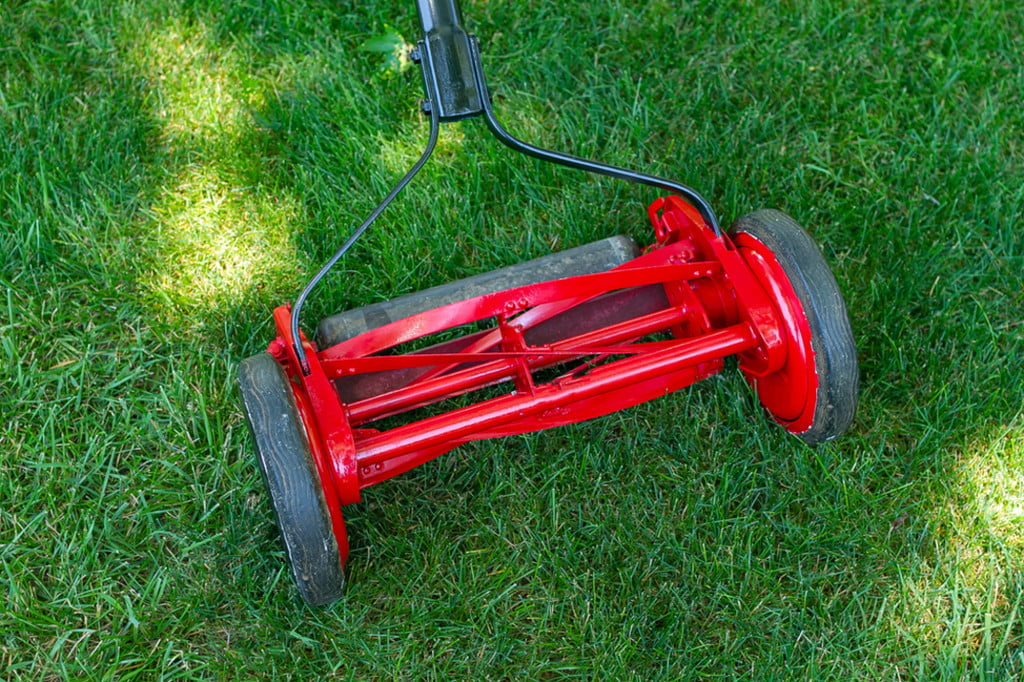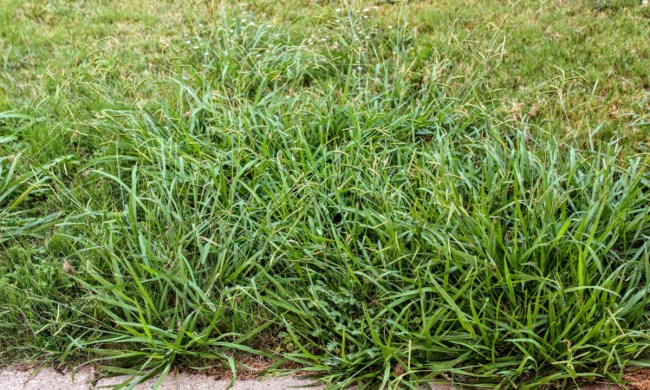If you haven’t been shopping for a new lawnmower lately, you may be surprised by the number of options available. Home improvement and hardware stores stock a vast array of gas-powered, corded electric, cordless electric, and manual push mowers, any one of which could be a great choice … or a poor choice. So how do you know which is the best?
Manual push vs. gas-powered vs. electric mowers
Priorities matter. Are you looking for power, economy, low emissions, or quiet operation? Or is there a whole other criterion of utmost importance to you? Most modern mowers include great options that can help keep your yard looking its best for a decade or more, but there are some important factors to keep in mind for all of them. Before picking out your new mower, you’ll need to understand the cost of each (both upfront and in terms of maintenance in years to come), the level of maintenance that will be required for each mower, how long the mower will last, how easy the mower is to maneuver, and the motor power each is able to offer.
We’ve assembled a head-to-head comparison of these popular mowers. Read on to learn more about how they work, what they can do, and which one may be the best fit for you.
Manual push mowers
A manual push mower, or reel mower, operates on human power. As the operator pushes the mower, a cylindrical blade assembly turns against a fixed blade to cut the grass with a scissor-like motion. Reel mowers provide a super-clean and neat, finished appearance. Manual push mowers are ideal for smaller, flatter lawns, but they can handle larger spaces if the grass is in good shape. Coarse weeds and sticks dull the blades prematurely and may stop them from turning. Reel mowers are available in cutting widths between 15 and 20 inches.
Gas-powered mowers
A gasoline-powered mower’s engine turns a vertical shaft connected to the mower blade. The blade has sharpened edges on both ends and makes two cutting passes with each revolution. The combined power and speed of the gas engine allows the mower to cut through herbaceous vegetation, fallen leaves, and small sticks with ease. Gasoline-powered mowers come in cutting widths between 20 and 24 inches.
Electric mowers
Electric push mowers use an electric motor to power a rotary blade. Both plug-in and cordless electric models offer plenty of power to mow and are comparable to gasoline mowers under normal conditions. However, they are subject to bogging down more easily in tall grass. Corded mowers are limited by proximity to a power source and the length of the extension cord. Cordless mowers are limited by battery run time and recharging time. Electric mowers are available in cutting widths between 14 and 21 inches. Electric mowers are a lot more eco-friendly than gas-powered mowers, though, and the cordless versions are especially easy to maneuver, which makes them great for smaller lawns.

Cost considerations
There are two cost aspects to consider with lawn mowers. The purchase price is a one-time cost and is directly comparable among the different types. The expected lifespan on all of these mowers is about 10 years, so there’s no need to calculate a per-year “depreciation” cost.
The second cost aspect is the ongoing operation expense. Fuel and routine maintenance add to the total cost of ownership over the life of a mower, as shown below.
Purchase price ranges for different mower types
- Manual push mower: $70 to $200
- Corded electric: $80 to $350
- Battery electric: $150 to $500
- Gas: $175 to $500
Annual operating costs and maintenance for different mower types
- Manual: $0 (Sharpen the blades once or twice a year)
- Corded electric: $15 to $22 (Electricity, extension cord, blades)
- Battery electric: $11 to $18 (Electricity, replacement batteries approximately every five years, blades)
- Gas: $20 to $35 (Gas, oil, filters, spark plug, blades)

Pros and cons of manual and electric mowers
Manual mowers
Pros:
- The cleanest cut
- Quietest operation
- No fuel needed
- Zero emissions.
Cons:
- Narrow cutting path
- The yard needs to be clean and mostly free of weeds
- Many models offer only a small range of height adjustments, so you may need to recut certain portions of the lawn a few times to get it to the desired length
Gas mowers
Pros:
- Lots of on-demand power
- Complete flexibility and portability
- Work even if the grass is really tall or weedy
- Relatively easy and inexpensive to replace broken parts.
- Options: self propelled, mulching, bagging, key start
Cons:
- Noise
- Potential issues with fuel storage/spillage
- Engine maintenance
- Air pollution
- Life is notably shorter than electric and manual counterparts
Corded electric
Pros:
- Quiet
- No liquid fuel storage
- No immediate area emissions (remote emissions at the power plant)
Cons:
- Bog down in high or weedy grass
- Limited to the length of extension cord
- Extension cord could be a tripping hazard
Cordless electric
Pros:
- Quiet
- No fuel to store
- No immediate area emissions (remote emissions at the power plant)
- Easiest option to maneuver
Cons:
- Bogs down in high or weedy grass
- Limited by battery life and recharge time
- Worn-out batteries must be disposed of properly
- New batteries are expensive
The winners
Most eco-friendly
Manual push mowers are an excellent choice for those who favor clean air, peace and quiet, and a neatly manicured appearance. The upfront cost is very low, and the complete lack of operating expense is a bonus. Skipping a cut makes the job more difficult the next time, but mowing generally is an easy and pleasant task with the manual push mower.
Most powerful
Gas-powered mowers are the tool of choice for cutting larger landscapes quickly. They provide the most power to cut through taller grass and weeds when necessary, and the widest cutting path.
Most practical
Cordless electric mowers make an excellent choice for small to midsize landscapes. Compared with gas mowers, they offer a competitive purchase price, lower operating cost, and quieter operation. Plus, they release minimal total emissions, and they are free from the cord.
Runner-up
Corded electric mowers offer plenty of power and unlimited runtime with minimal total emissions but without the problem of batteries. They are mostly limited to smaller landscapes due to the extension cord.






